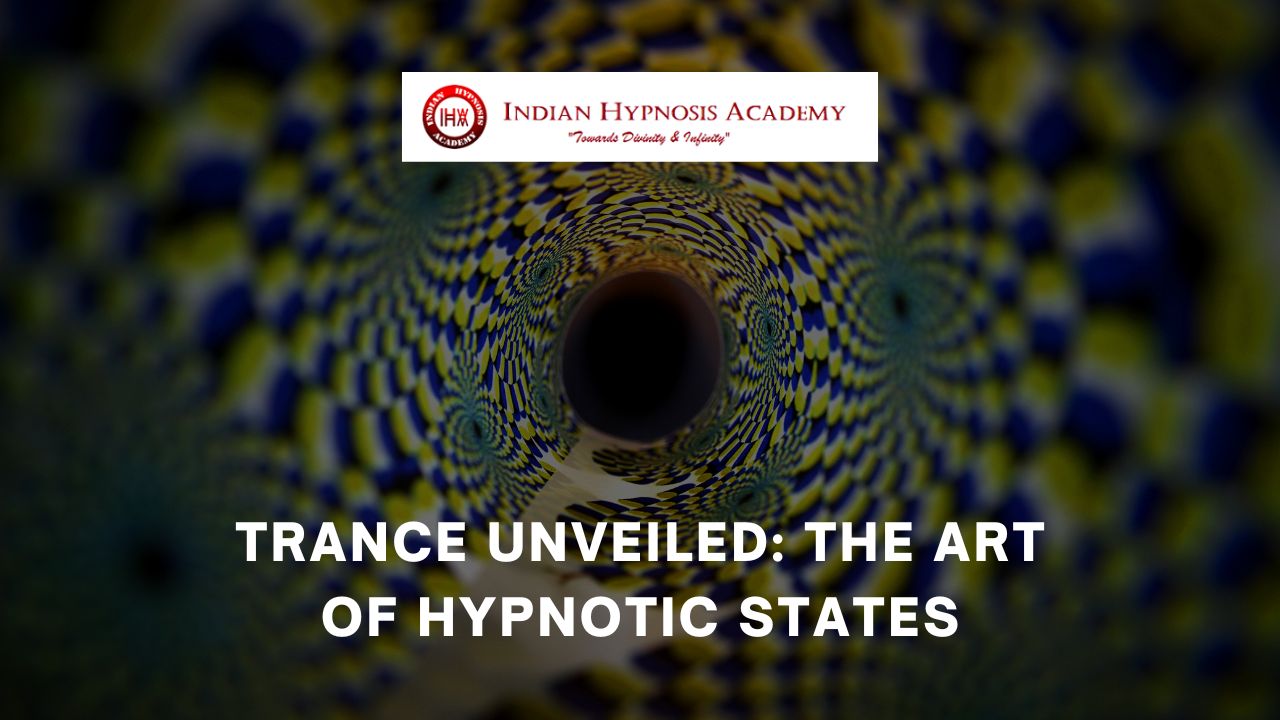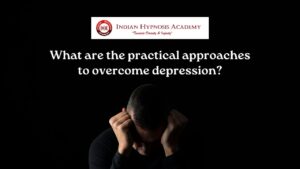Welcome to the captivating world of trance and hypnosis! Have you ever found yourself completely engrossed in a movie or lost in the rhythm of your favorite song? That feeling of being absorbed, almost hypnotized, is what we’ll be exploring in this enlightening blog post. Trance states have fascinated humans for centuries, from ancient rituals to modern therapeutic techniques. So grab a seat and prepare to delve into the art of hypnotic states as we uncover their history, science behind them, therapeutic benefits, and much more. Get ready to embark on an intriguing journey that will leave you spellbound!
Understanding Trance and Hypnosis
Trance and hypnosis are intriguing states of consciousness that have captivated the human mind for ages. But what exactly do they entail? Trance can be described as an altered state of awareness characterized by deep relaxation, heightened focus, and increased suggestibility. It is a naturally occurring phenomenon that we experience daily without even realizing it. Have you ever been so engrossed in a book or lost track of time while daydreaming? That’s a form of trance.
Hypnosis, on the other hand, is often associated with stage performances and mystical practices but holds much more depth. It is a therapeutic technique used to tap into the power of the subconscious mind to bring about positive change. Contrary to popular belief, hypnosis does not involve mind control or manipulation; instead, it helps individuals access their inner resources for personal growth and healing.
During trance and hypnosis, our conscious mind takes a backseat while our subconscious becomes more receptive to suggestions. This allows us to bypass mental barriers and explore deeper aspects of ourselves that may be hidden or suppressed in ordinary waking consciousness.
Understanding trance and hypnosis requires acknowledging their potential for transformational experiences rather than dismissing them as mere parlor tricks or illusions. These states offer opportunities for self-discovery, personal development, stress reduction, overcoming fears or phobias, improving concentration and focus—the possibilities are endless!
To truly grasp the art of hypnotic states, it’s crucial to recognize that everyone experiences trance differently due to individual variations in suggestibility and responsiveness. Some people may drift into profound trances effortlessly while others require gentle guidance from a skilled practitioner.
Intriguing isn’t it? In this blog post journey ahead we will delve deeper into the history behind these mesmerizing states along with exploring their scientific basis, the therapeutic benefits they offer, and different techniques employed So buckle up as we unravel more fascinating insights into this enigmatic world!
The History of Hypnotic States
Hypnosis and trance have a long and intriguing history that dates back centuries. The roots of these practices can be traced to ancient civilizations such as Egypt, Greece, and India. In these cultures, individuals believed in the power of altered states of consciousness for healing purposes.
One significant figure in the history of hypnotic states is Franz Mesmer, an Austrian physician who lived in the 18th century. Mesmer developed a theory known as “animal magnetism,” which proposed that there was a magnetic force within humans that could be manipulated to induce deep relaxation and therapeutic effects.
Although Mesmer’s ideas were controversial at the time, they laid the foundation for modern hypnosis techniques. One key development came with James Braid, a Scottish surgeon who coined the term “hypnosis” in the mid-19th century. Braid focused on using hypnosis as a tool for psychological exploration and treatment.
In more recent years, pioneers like Milton H. Erickson further expanded our understanding of trance states through their innovative approaches to therapy. Ericksonian hypnotherapy emphasized individualized methods based on rapport-building and indirect suggestion.
Today, hypnosis has evolved into a recognized field with various therapeutic applications ranging from pain management to smoking cessation. It continues to intrigue researchers and practitioners alike as they explore new ways to harness its potential benefits.
With each passing year, we gain more insight into the science behind hypnotic states thanks to advancements in brain imaging technology. These studies help us understand how different areas of the brain are affected during trance-like experiences.
As we delve deeper into this fascinating realm, it becomes clear that there is still much more left to discover about hypnotic states’ true nature and potential benefits.
The Science Behind Trance
Trance is a fascinating phenomenon that has intrigued scientists and researchers for centuries. It is not just some mystical or magical state; there is actually a scientific explanation behind it. When we enter a state of trance, our brain waves undergo specific changes that can be measured using EEG (electroencephalogram) technology.
During normal waking consciousness, our brains produce beta waves which are associated with alertness and concentration. However, when we start to relax and enter a hypnotic state, our brain waves shift into the alpha frequency range. Alpha waves are slower in frequency and indicate a more relaxed and receptive state of mind.
As we go deeper into trance, our brain wave activity slows even further into the theta frequency range. Theta waves are associated with deep relaxation, creativity, and access to the subconscious mind. This is why hypnosis can be such an effective tool for accessing hidden memories or facilitating behavioral change.
Research has shown that during trance states, various regions of the brain become more interconnected while others become less active. This altered connectivity allows for enhanced focus on specific thoughts or suggestions provided by the hypnotist.
Furthermore, studies have demonstrated that hypnosis can affect neurotransmitter levels in the brain. For example, it has been found to increase dopamine production which plays a role in motivation and reward processing.
In addition to these neurological changes, there are also physiological responses associated with trance states. These include decreased heart rate and blood pressure as well as increased skin temperature due to improved circulation.
Benefits of Trance and Hypnosis
Trance and hypnosis have been practiced for centuries, with numerous benefits reported by those who have experienced them. These techniques can be used to access the subconscious mind, allowing individuals to tap into their inner resources and make positive changes in their lives.
One of the primary benefits of trance is its ability to promote relaxation and reduce stress. By inducing a state of deep relaxation, individuals can release tension from their bodies and minds, leading to improved well-being and overall mental health.
In addition to relaxation, trance can also enhance focus and concentration. When in a hypnotic state, distractions fade away, allowing individuals to fully concentrate on specific goals or tasks. This heightened focus can improve performance in various areas such as sports, academics, or creative endeavors.
Furthermore, trance can be an effective tool for self-improvement. By accessing the subconscious mind during hypnosis, individuals are able to address negative thought patterns or behaviors that may be holding them back. This allows them to reprogram their minds with more positive beliefs and attitudes.
Another benefit of trance is its potential for pain management. Through hypnosis, individuals may learn techniques for reducing physical discomfort or shifting their perception of pain altogether. This has proven particularly useful for chronic pain sufferers who seek alternative methods for relief.
Moreover, trance has shown promise in helping people overcome addictions or break unhealthy habits. By bypassing the conscious mind’s resistance through hypnosis sessions focused on addiction recovery or behavior change reinforcement techniques like visualization or affirmations – it becomes possible not only escape negative cycles but also create new healthier ones instead!
Vr hypno offers numerous benefits ranging from stress reduction improved concentration increased self-confidence better pain control overcoming addictions promoting healthy habits among others making it a valuable tool personal growth exploration and healing. Whether used for relaxation or self-improvement, trance and hypnosis can be powerful tools for improving overall well-being and creating positive change in one’s life.
How to Induce a State of Trance
Have you ever been curious about how to induce a state of trance? It’s an intriguing concept that has captured the interest of many over the years. Whether you’re interested in exploring your own subconscious mind or helping others tap into their inner resources, learning how to induce trance can be a valuable skill.
One method for inducing trance is through relaxation techniques. By creating a calm and peaceful environment, both physically and mentally, you can begin to enter into a deeply relaxed state. This might involve finding a quiet space, dimming the lights, and taking slow, deep breaths. As your body relaxes, so too does your mind.
Another technique often used is guided imagery. This involves using vivid and descriptive language to lead someone into a specific mental landscape. By engaging all of the senses – sight, sound, touch, taste, smell – you can create an immersive experience that helps facilitate trance.
Repetition can also be utilized as an induction method. By repeating certain words or phrases in a rhythmic manner, it becomes easier for the mind to enter into a receptive state. This technique is often employed in hypnosis sessions where mantras or affirmations are repeated with intention.
Visualization exercises can be effective as well when trying to induce trance states. By imagining yourself in different scenarios or visualizing desired outcomes while focusing on relaxation and deep breathing techniques simultaneously it becomes possible for one’s consciousness shift towards more profound levels of awareness.
It’s important to note that everyone responds differently to induction methods due not only individual preferences but also personal experiences with hypnotic practices including cultural background exposure levels etcetera therefore there isn’t one-size-fits-all approach when attempting induction always keep open-mindedness experimentation until finding what works best given circumstances involved
Common Myths and Misconceptions About Trance
Trance and hypnosis have long been subjects of fascination, but they are also surrounded by numerous myths and misconceptions. Let’s debunk some of the common misunderstandings about these hypnotic states.
One prevalent myth is that hypnosis involves mind control or manipulation. In reality, trance is a state of deep relaxation where individuals become more open to suggestion. They still retain their free will and cannot be forced to do anything against their moral code or beliefs.
Another misconception is that only weak-minded people can be hypnotized. On the contrary, anyone with an average level of intelligence and willingness to participate can experience trance. It has nothing to do with intelligence or strength of character.
There is also a belief that once in a trance, individuals lose consciousness or awareness of their surroundings. However, this couldn’t be further from the truth! Trance actually enhances focus and concentration, allowing individuals to tap into their inner resources more effectively.
Some people worry that they might get stuck in a hypnotic state or never wake up from it. Rest assured, this is simply not possible. Trance is a natural phenomenon that we all experience regularly when we daydream or become engrossed in a book or movie.
Furthermore, there’s often skepticism around the therapeutic benefits of hypnosis. While it may not work for everyone in every situation, research shows its effectiveness in treating various conditions such as anxiety disorders, phobias, chronic pain management, smoking cessation, and even improving sports performance.
Therapeutic Uses of Hypnotic States
Hypnotic states have been utilized for therapeutic purposes for centuries, with various techniques and methods developed to harness the power of the mind. These hypnotic states can be a powerful tool in helping individuals overcome a range of issues, from stress and anxiety to phobias and addiction.
One common therapeutic use of hypnosis is in the treatment of chronic pain. By inducing a state of deep relaxation, hypnosis can help alleviate both physical discomfort and psychological distress associated with long-term pain conditions.
Another area where hypnotic states have shown promise is in managing mental health disorders such as depression and post-traumatic stress disorder (PTSD). Through guided imagery and suggestion, hypnosis can assist individuals in reframing negative thought patterns, reducing symptoms, and promoting overall well-being.
Furthermore, hypnotherapy has been successful in aiding smoking cessation efforts. By accessing the subconscious mind during a hypnotic state, practitioners are able to address underlying beliefs and motivations related to smoking behavior. This approach has proven effective for many individuals looking to break free from nicotine addiction.
Additionally, hypnotic states can be used as an adjunctive therapy for weight loss management. Through focused visualization exercises and positive reinforcement suggestions during trance-inducing sessions, individuals may experience increased motivation and behavioral changes that support healthy eating habits and exercise routines.
It’s important to note that while hypnotic states show great potential as a therapeutic tool, it should always be conducted by trained professionals who adhere to ethical guidelines. The effectiveness of hypnosis may vary depending on individual susceptibility, so it’s crucial to work with someone experienced in tailoring sessions specifically for each person’s unique needs.
Exploring Different Techniques and Methods
When it comes to inducing a state of trance, there are numerous techniques and methods that can be used. What works for one person may not work for another, so it’s important to explore different approaches to find what resonates with you.
One popular technique is known as progressive relaxation. This involves systematically relaxing each part of the body from head to toe, allowing tension to melt away and promoting a deep sense of calmness. Another method is visualization, where individuals create vivid mental images that transport them into a hypnotic state.
Some practitioners utilize guided imagery, where they use verbal cues and storytelling to guide someone into a trance-like state. Others rely on repetitive or rhythmic stimuli such as chanting or drumming to induce relaxation and focus.
Another approach is self-hypnosis, which empowers individuals to enter trance states on their own through specific techniques like breathing exercises or affirmations. This allows for greater control over the experience and enables people to tap into their own inner resources for healing or personal growth.
In addition, hypnotherapy sessions may incorporate various therapeutic modalities such as cognitive-behavioral techniques or regression therapy. These methods aim at addressing subconscious patterns or beliefs that may be hindering personal development or causing distress.
It’s worth noting that not all techniques will produce the same results for everyone. Some individuals may respond better to auditory stimuli while others might benefit more from visualizations. Experimenting with different approaches can help you discover what resonates most strongly with your unique needs and preferences.
As always when exploring different techniques and methods related to trance induction, it’s important to approach these practices responsibly and under the guidance of trained professionals who have expertise in hypnosis therapy. They can provide valuable insights tailored specifically to your individual circumstances while ensuring your safety throughout the process.
Precautions and Risks Associated with Hypnosis
When it comes to exploring the realm of hypnosis, it’s important to approach it with caution. While hypnosis can be a powerful tool for personal growth and self-improvement, there are potential risks that should be considered.
It’s crucial to seek professional guidance when undergoing hypnosis. Working with a trained and experienced hypnotist ensures that you receive proper guidance and support throughout the process. This helps minimize any potential negative effects or risks associated with unguided practice.
Additionally, individuals who have certain mental health conditions should exercise caution when considering hypnosis. Those suffering from schizophrenia or severe dissociative disorders may experience increased vulnerability during a hypnotic state. It is always advisable to consult with a healthcare professional before engaging in any form of hypnosis if you have these conditions.
Furthermore, it’s important to remember that not everyone is susceptible to being hypnotized. Some individuals may have difficulty entering into a trance-like state or receiving suggestions effectively. This variability in susceptibility means that not everyone will respond the same way to hypnosis.
While rare, there have been reported cases of false memories or unintended consequences arising from past-life regression sessions under hypnotherapy. Therefore, it is essential for both clients and practitioners alike to approach this technique responsibly and ethically.
By acknowledging these precautions and risks associated with hypnosis, individuals can make informed decisions about their own involvement in this practice. Remembering that each person’s experience will differ allows for respect towards individual boundaries within the world of trance exploration.
Conclusion
In this journey through the realm of trance and hypnosis, we have uncovered the fascinating art behind these hypnotic states. From understanding their history to exploring the science behind them, we have delved into the depths of this intriguing phenomenon.
Trance and hypnosis hold immense potential when it comes to reaping various benefits. Whether it’s relieving stress, overcoming fears and phobias, or enhancing creativity and performance, these techniques offer a powerful tool for personal growth and transformation.
To induce a state of trance, there are numerous methods one can explore. From guided visualizations to breathing exercises or even utilizing virtual reality technology like VR Hypno (the keyword!), there is no shortage of approaches to enter this altered state of consciousness.
However, amidst all the wonder surrounding trance and hypnosis, it is important to address common myths and misconceptions that often cloud our understanding. Contrary to popular belief, individuals cannot be forced against their will in a hypnotic state nor can they lose control completely. Trance remains an experience where individuals retain their awareness while accessing deeper levels of relaxation or focus.
When used therapeutically under professional guidance, hypnotic states can be instrumental in treating various conditions such as anxiety disorders, chronic pain management, addiction recovery among many others. The power lies in harnessing the mind-body connection towards healing and positive change.
It is crucial to approach hypnosis with care though as precautions must be taken due to potential risks involved if not practiced responsibly. It should only be performed by trained professionals who understand ethical guidelines along with ensuring psychological safety for clients.
As we conclude our exploration into the world of trance unveiling its captivating nature alongside its therapeutic applications as well as cautionary aspects—we invite you on your own voyage into discovering more about this ancient practice! Embrace the possibilities that lie within your subconscious mind; let yourself drift away on waves of relaxation and empowerment!




